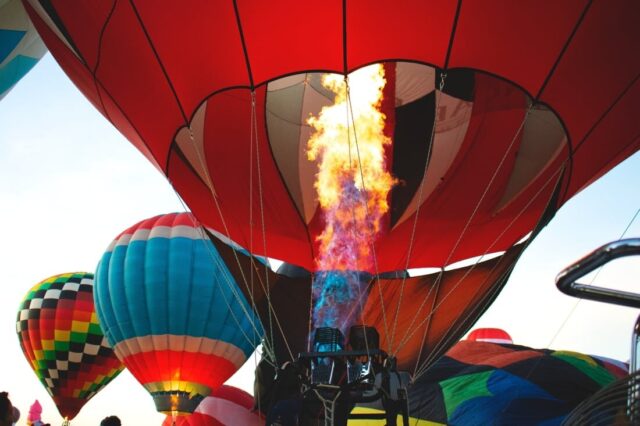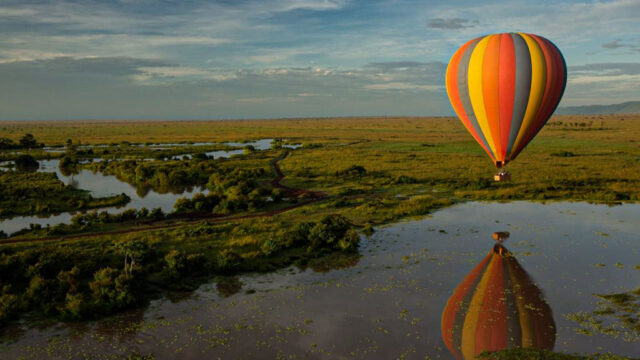Hot air ballooning has been around since 1783, when the first successful manned hot air balloon was launched in Paris. The event was witnessed by a large crowd and even King Louis XVI of France was present to witness the historic flight. The two brothers, Joseph-Michel and Jacques-Étienne Montgolfier were credited with inventing the hot air balloon.
Since then, hot air balloons have become a popular form of transportation over long distances and have been used for recreational purposes as well. In 1836, John Wise built the first large-scale passenger-carrying balloons in the United States, which could carry up to 20 passengers at a time. By 1902, more than 3,000 people had taken flights on hot air balloons across Europe and North America.
In more recent years, the best hot air balloon in Singapore has become an increasingly popular tourist activity worldwide with many countries offering commercial flights for sightseeing purposes or just plain leisurely joyrides in some of the most beautiful parts of their respective countries.
Hot air balloons are also used for various scientific experiments such as photographing wildlife from above or studying weather patterns in certain areas due to their ability to fly high into the atmosphere without disturbing any living animals below them.
Overview of the design and construction of a hot air balloon

Hot air balloons have been around for many centuries, with their first recorded use dating back to 1783. They are a popular form of transportation and entertainment and continue to be used widely today. In this article, we will provide an overview of the design and construction of hot air balloons.
The basic design of a hot air balloon consists of an envelope (fabric container), basket or gondola (basket for passengers), burners (to heat the air in the envelope) and fuel tanks. The envelope is made from lightweight nylon or polyester fabric which is sewn together in panels to form a single bag-like structure.
Inside the envelope, there are several outlets that allow air to escape when it cools down during descent; these outlets also help keep the balloon inflated while it is flying by allowing heated air to rise up from below.
The basket or gondola is attached underneath the envelope and provides seating for passengers or cargo; typically made out of wicker or cane, they come in various shapes and sizes depending on how many passengers they need to accommodate.
Advantages and disadvantages of using a hot air balloon for travel or recreation

Hot air balloon rides are a popular way to view the world from a unique and exciting perspective. Many people enjoy hot air balloon rides for travel or recreation, however, there are both advantages and disadvantages to consider before taking one.
The main advantage of using a hot air balloon for travel or recreation is that it gives you the ability to take in an incredible view of your surroundings while gliding through the sky.
Hot air balloons can reach great heights, allowing passengers to see expansive landscapes, cities and other sights with clarity and detail that would be hard to experience from the ground. Additionally, because hot air balloons move slowly and silently through the sky, passengers can feel more connected with their environment than they would when travelling in other forms of transportation such as cars or planes.
On the other hand, there are some potential downsides associated with travelling by hot air balloons. One major disadvantage is that trips can be affected by weather conditions such as wind direction or cloud cover which may prevent a safe take-off or landing if conditions become too extreme.
Safety precautions when using a hot air balloon

Hot air ballooning is an amazing way to get up close and personal with nature, offering breathtaking views of the world below. However, it’s important to take safety precautions when using a hot air balloon, as it can be dangerous if proper procedures are not followed. Here are some tips for staying safe while hot air ballooning:
- Pre-Flight Safety Check – Before taking off in a hot air balloon, make sure that all components of the balloon and equipment have been checked by a qualified professional for any sign of wear or damage. This includes checking all lines, valves, fuel tanks and burners for any signs of wear or tear.
- Securely Attached Fuel Tanks – Hot air balloons require propane tanks in order to stay afloat; these must be securely attached at all times during the flight. Loosely-attached tanks can cause major problems mid-flight and should be avoided at all costs.
- Weather Conditions – It’s important to take note of the weather conditions before deciding whether or not it’s safe to fly in a hot air balloon; windy conditions can make flying hazardous due to increased turbulence and unpredictable winds that could cause the balloon to go off course.
Various uses for a hot air balloon today

Hot air balloons have been around for centuries and remain a beloved activity for many people due to their peacefulness and spectacular views. But the use of hot air balloons has changed over the years, and today they are used in a variety of ways.
One of the most common uses for hot air balloons is as a form of recreation. Hot air balloon rides provide breathtaking views, especially over the countryside or mountainous areas, making it an enjoyable experience for passengers and pilots alike.
In addition to recreational flights, hot air balloons are also used in competitions such as races or accuracy challenges where teams compete against each other to see who can navigate their balloon to certain locations or land closest to targets on the ground.
Hot air balloons also have practical applications in research fields such as meteorology, climatology, and even biology. Meteorologists use them to collect data on wind currents at different altitudes which can help with forecasting more accurately weather patterns across large areas.
Climatologists use them to measure radiation levels from the sun at varying heights above the Earth’s surface which can help inform our understanding of climate change. Biologists even use them occasionally for surveys related to wildlife populations or ecosystems that require observation from above ground level.
Future developments in the use of hot air balloons

In the 21st century, hot air balloons have been used for everything from sightseeing to space exploration. As technology advances and our understanding of ballooning grows, there is no telling what new and exciting applications may be discovered in the future. Here we take a look at some potential developments in hot-air ballooning that could revolutionize the industry.
One of the most exciting prospects for hot air balloons is their potential use as an alternative form of transportation. While it may seem like a far-fetched idea, engineers are already exploring methods to make long-distance balloon travel viable and safe.
For example, researchers are experimenting with lightweight composite materials that could reduce drag on larger balloons while increasing their lift capacity, making them ideal for carrying passengers or cargo over longer distances. This could open up a new world of possibilities for travel – allowing people to fly from one city to another without ever needing to board an airplane.
Another development in hot air ballooning is its use as an environmental monitoring tool. By using large airborne sensors attached to specially designed balloons, scientists can collect valuable data about weather patterns or pollution levels without having to send out teams on foot or by car.







